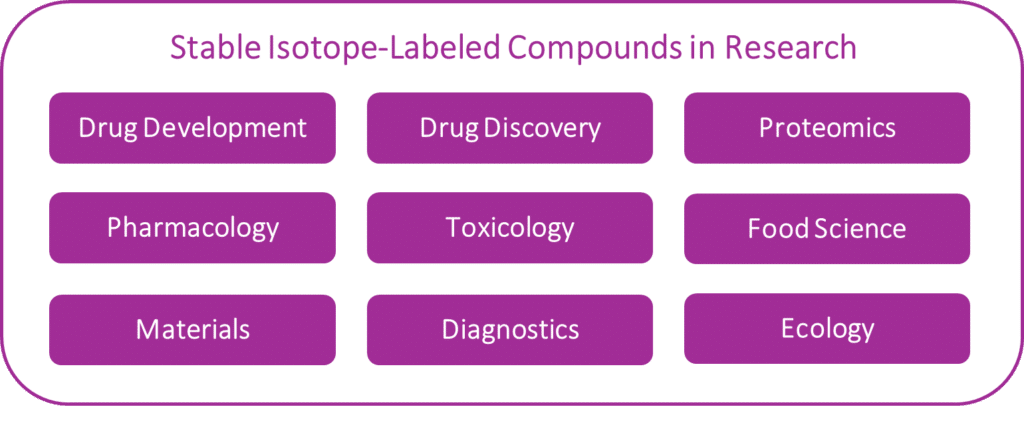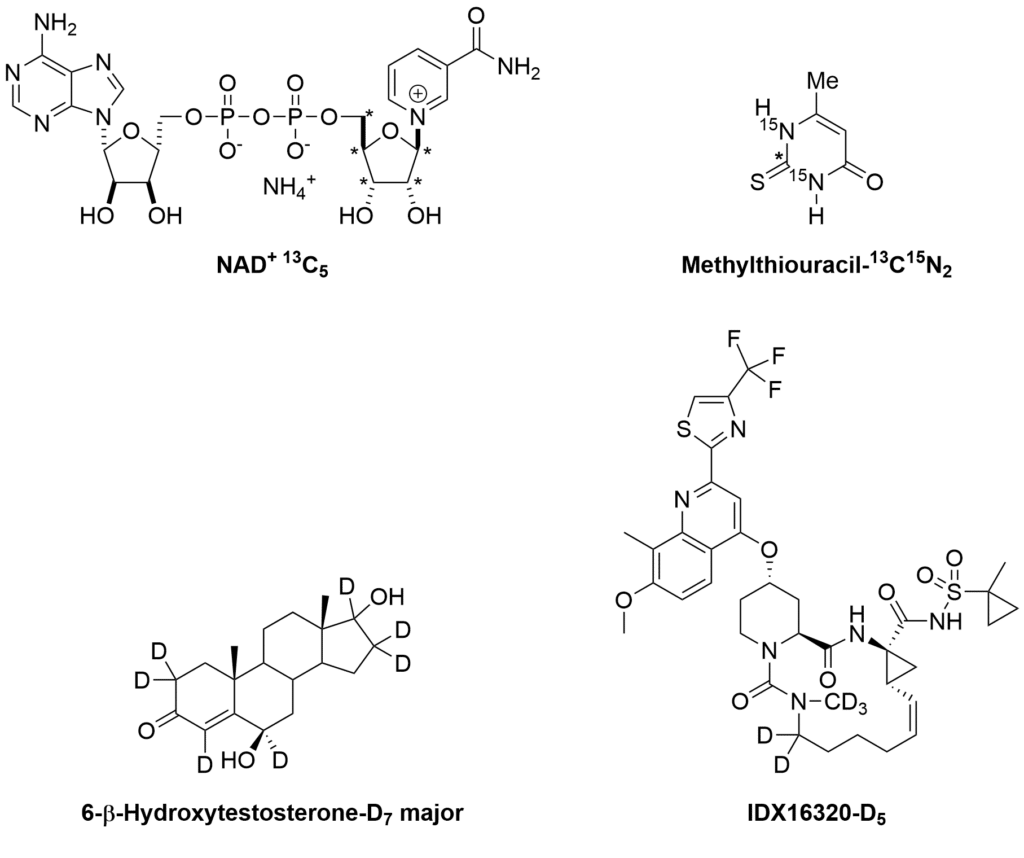Stable isotope-labeled compounds, such as deuterium (2H or D), carbon-13 (13C), and nitrogen-15 (15N), are exceptional tools with a wide range of applications in identifying and understanding chemical and biological processes. The unique properties of 2D-, 13C-, and 15N-labeled compounds make them indispensable for various purposes and they play key roles in the analysis of drug metabolites and agrochemicals, studies of reaction mechanism and kinetics, the development of sensitive analytical techniques, and drug metabolism and pharmacokinetics (DMPK) research.[1],[2],[3]
Deuterium (2H) Labeling:
- Mechanistic and Kinetic Studies: Deuterium introduces the kinetic isotope effect which can be exploited in mechanistic studies.
- Drug Metabolism Studies: Incorporation of deuterium allows the study of metabolic pathways, bioavailability, and drug interactions.
- Drug Metabolism and Pharmacokinetics (DMPK) Research: Deuterium labeling improves the deuterated drug pharmacokinetics, typically with reduced clearance rates and extended half-lives.
13C and 15N Labeling:
- Agrochemical Research: Stable isotopes like 13C and 15N enable tracing agrochemical fate, offering insights into persistence and environmental impact.
- Mechanistic and Kinetic Studies: Labeling with 13C and 15N allows elucidation of reaction mechanisms and kinetics.
- Mass Spectrometry (MS) Applications: Stable isotope-labeled compounds, e.g., 13C and 15N, improve specificity, benefiting proteomics, metabolomics, environmental analysis, and food sciences.
- Nuclear Magnetic Resonance (NMR) Studies: Stable isotopes like 13C and 15N allow detailed structural characterization of biomolecules and measurement of ligand-protein interactions.
- Quantitative Analysis: Labeled compounds enable precise concentration measurement, crucial for assessing chemical processes and drug candidates.

Symeres has synthesized hundreds of stable isotope-labeled compounds with our clients in the last decades and can assist you with your needs.
Synthesis of Stable Isotope-Labeled Compounds
The incorporation of isotopes into an organic compound can be performed by employing two main methods, namely, direct use of isotope-containing commercially available precursors followed by the subsequent synthesis of the desired compounds, and in the case of deuterium-containing molecules, hydrogen/deuterium exchange reactions. Both principles are employed at Symeres for the introduction of single or multiple isotopic atoms into organic compounds.
In addition to our custom synthesis services, where we can synthesize any labeled compound our customer requires, we also have a broad range of stable isotope-labeled compounds available for purchase from Chiralix, a Symeres company, visit their website to download their catalogue, below is a small snapshot of the variety of labelled compounds available from Chiralix.

Please use the contact form below to speak to our experts about your requirements for isotopically labelled compounds.
[1] S.P. Bew et al., Synthesis 2013, 45 , 903-912 DOI: https://doi.org/10.1021/ol400804b
[2] A.E. Mutlib, Chem. Res. Toxicol. 2008, 21 , 1672–1689 DOI: https://doi.org/10.1021/tx800139z
[3] J. Atzrodt et al., Angew. Chem. Int. Ed. 2018, 57 , 1758–1784 DOI: https://doi.org/10.1002/anie.201704146
